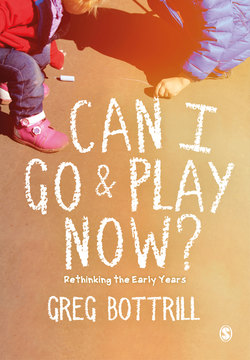Читать книгу Can I Go and Play Now? - Greg Bottrill - Страница 18
На сайте Литреса книга снята с продажи.
Now consider your classroom space
ОглавлениеIs the space calming? Is it a home for the children? Is it representing your own idea of what you think a classroom should look like, is it decorated with online-acquired displays, posters and huge intricate boards in garish primary hues? We need to begin to ask ourselves: what is it that children need around them to truly learn, feel safe and feel like the classroom is somewhere that they can call their own.
Your objective should be to create a universe that they can operate within that is their universe not the adults’ nor the adults’ idea of what that universe should look like. Go on Pinterest right now and search for classroom ideas. You’ll find picture after picture of primary coloured borders, and charts and displays – neat and tidy, ordered and the outcome of a weekend’s laminating, cutting and sticking up. All lovely, though your crafted displays aren’t necessarily proven to be effective for children.
Ask yourself why you put up displays in your classroom. Who are they for? In truth, they are likely to be more for the adults in the guise of SLT, parents and visitors. They are for the domain of the Learning Walk. Your children may have the temporary glow of seeing something they’ve written or drawn presented in a neatly trimmed border, but that feeling will fade very quickly as it becomes another part of the wallpaper around them. And then you’ll have to go again and spend time on another display. Life is literally too short. Your children don’t need these displays. What they need is a universe that is theirs.
Primary colours, writing everywhere and brightly backed display boards create a maelstrom of sensory overload. The number of children with needs on the autism spectrum seems to be increasing and these children in particular are spending their school days in confusing environments that scream at them in a riot of information and bright colour. Our Early Years classroom spaces need a rethink. A really useful exercise is to ask your children to tell you their favourite things about the learning space. Whenever I have done this simple exercise, not once has a child mentioned any type of display. We slavishly put these things up because we think we need to. It’s like an unspoken rule passed down from generation to generation that somehow classrooms have to look a certain way. Well, they don’t – in fact, the adage less is more is the way forward.
‘You think I’m still the same/In every single way/But I changed ...’ Gone, Day Wave
The second useful exercise is to take a look at your classroom space yourself. Is what I have put up useful? Is it engaging? Is it at child eye-level? There really is nothing better than applying a sense of gay abandon and literally ripping your classroom apart ready to rebuild it. Take everything down – the backing paper, the printed number lines, the Words of the Week display, the reward charts, the Welcome board. Declutter. It’s one of the hardest things to do, but one of the most refreshing things at the same time. Question everything that you have on the walls and in some cases that you have on the ceiling. We quickly get trapped in the mindsets of the adult world in our classrooms. We become like the playground planning team who instantly think that all children love primary colours because they are jolly and childlike or every child loves a swing and slide.
At my school we take the children every week to our on-site woods. The level of play and engagement from the children is extraordinary and there’s not a single colour outside of brown or green in sight. We need to take the natural colours and bring them in. Burn the purple, garish backing paper and leave the backing boards plain brown – an added bonus is that instantly you’ve saved you or your TA 30 minutes’ work putting up backing paper, time that is better spent focusing on your children’s Next Steps.
